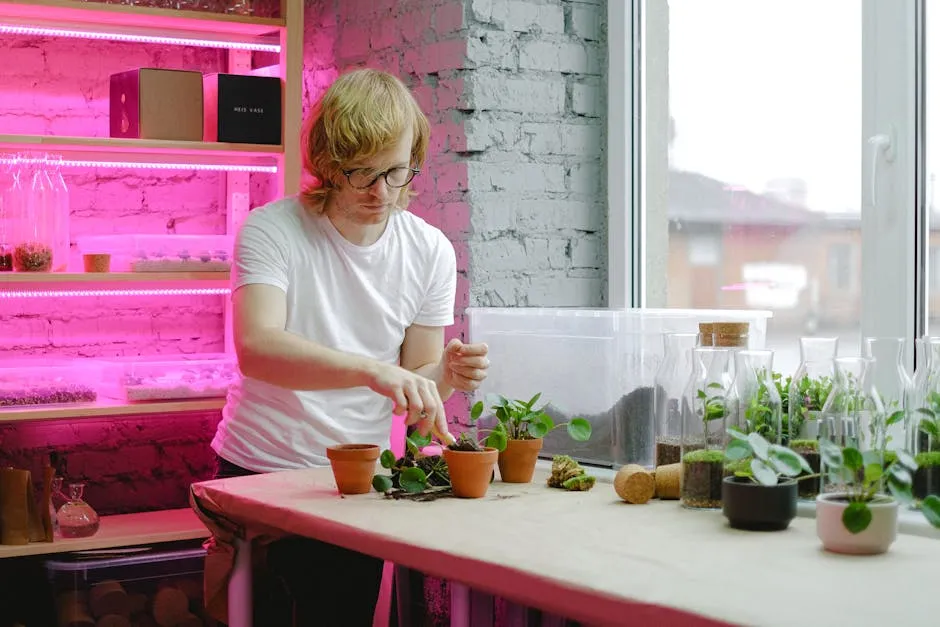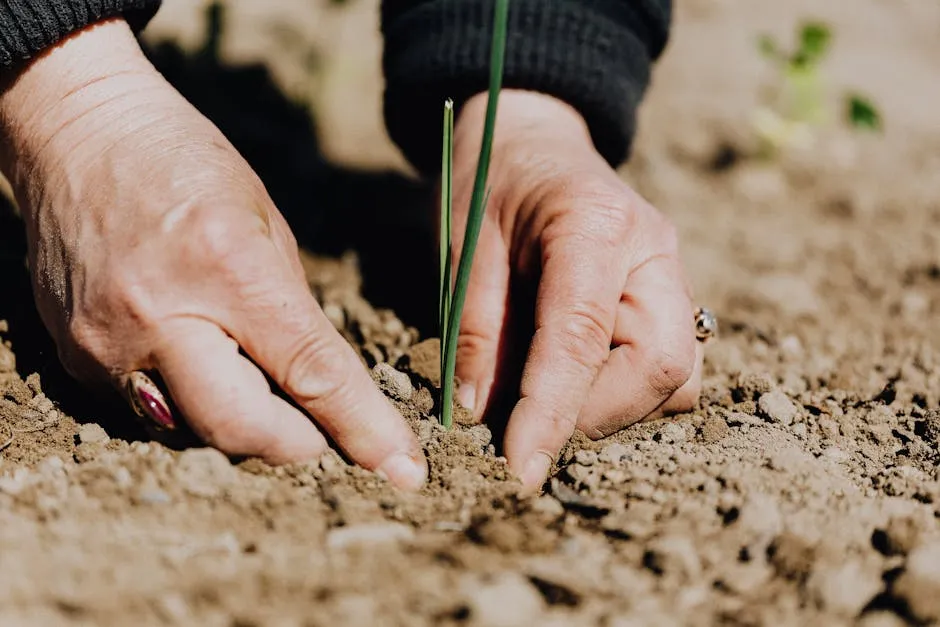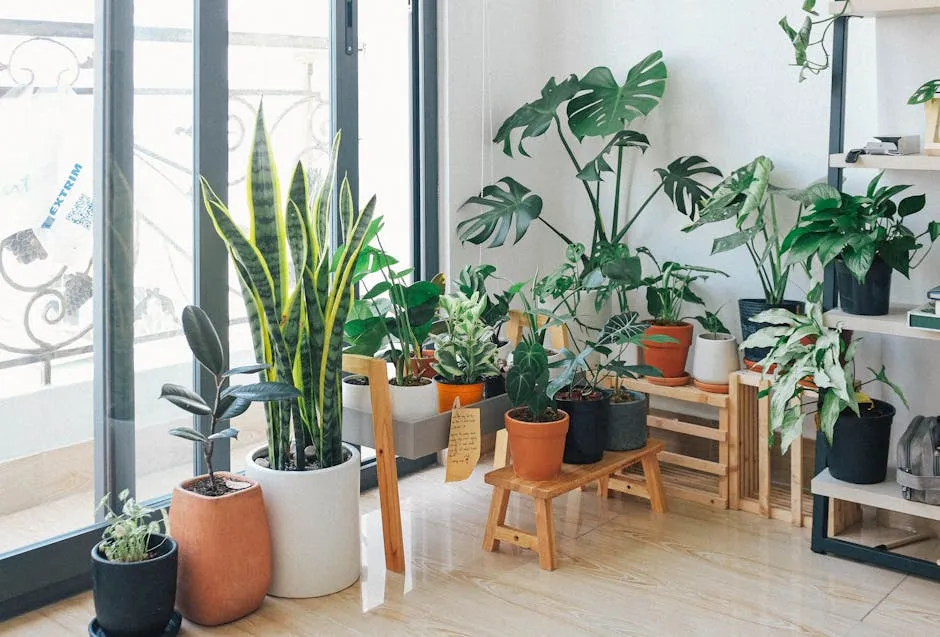
Fire Stick Plant: A Comprehensive Guide to Care and Cultivation
Introduction
Have you seen a plant that looks like it’s on fire? That’s the Fire Stick plant! With its striking, colorful stems, this succulent has captured the hearts of many plant lovers. Officially known as Euphorbia tirucalli ‘Firesticks,’ it belongs to the Euphorbiaceae family. Understanding its care needs is crucial for optimal growth and health.
To keep your plant thriving, you might want to consider investing in a Moisture Meter for Plants. This handy tool helps you avoid the dreaded overwatering, which can lead to root rot and other issues. With a moisture meter, you’ll be able to tell when your Fire Stick is thirsty, keeping it healthy and happy!
Summary and Overview
The Fire Stick plant originates from Africa and is a succulent. Its unique, stick-like branches transition from green to vibrant red and orange hues, mimicking flames. This eye-catching appearance makes it a favorite in home decor and landscaping.
When caring for your Fire Stick, focus on three key areas: light, watering, and soil. It thrives in direct sunlight, needs minimal watering, and prefers well-draining soil. However, be cautious—overwatering can lead to root rot, a common issue for many owners.

For more insights on handling common issues like root rot, check out our article on solutions for common issues in DIY greenhouses made from recycled materials.
By understanding these essential care tips, you can keep your Fire Stick plant healthy and thriving. And if you’re looking to spruce up your gardening game, consider grabbing a pair of Gardening Gloves. They’re not just stylish, they protect your hands from the thorny bits of your plant pals!
Understanding the Fire Stick Plant
Taxonomy and Characteristics
The scientific classification of the Fire Stick plant is as follows: it falls under the genus Euphorbia and the family Euphorbiaceae. Its physical traits are quite remarkable. The plant typically grows up to 6 feet tall, with slender, upright stems.
As a succulent, it stores water in its stems, making it drought-resistant. The color of its branches can shift throughout the seasons, adding to its charm. You can expect a lifespan of several years with the right care, making it a long-term companion in your home.

To help you learn more about caring for your green friends, consider checking out a Plant Care Book. It’s like a manual for plant parenting, ensuring you become the best plant parent on the block!
Care Requirements
Watering Needs
Fire Stick plants thrive on a careful watering routine. Water them approximately every 10 to 14 days. Adjust based on your home’s humidity and temperature. A good rule of thumb is to provide about half a cup of water when needed.
Watch for signs of overwatering, like squishy or translucent leaves. Underwatering shows through dry, shriveled stems. Using a moisture meter can help you monitor hydration levels effectively. You can also find apps designed to create personalized watering schedules based on your plant’s needs.

Light Requirements
These vibrant plants prefer bright, direct sunlight. Ideally, place your Fire Stick plant near a south-facing window. Just a foot away is best for optimal growth. If it doesn’t receive enough light, you may notice leggy growth or pale colors.
Conversely, too much light can scorch the leaves. To avoid this, observe your plant regularly. If it starts to look burnt or faded, adjust its position. Remember, a little trial and error will help you find the perfect spot for your Fire Stick.
Soil and Potting
Choosing the right soil is crucial for your Fire Stick plant. It thrives in well-draining potting soil, ideally mixed with Perlite for Soil Mixing. This ensures excess moisture drains away quickly.
When potting, select a container with drainage holes to prevent water accumulation. As your plant grows, consider repotting it every year or once it doubles in size. Signs that it’s time to repot include roots poking out of the drainage holes or the plant becoming top-heavy. Proper soil and potting help keep your Fire Stick healthy and flourishing.

Nutritional Needs
Fertilization
Fire Stick plants thrive with minimal fertilization. Generally, they benefit from a balanced, diluted fertilizer during the growing season. Use a Liquid Fertilizer for Succulents every 4-6 weeks from spring to early fall. This routine supports their growth and enhances overall health.
Organic fertilizers improve soil structure and promote beneficial microbes. They release nutrients slowly, providing a steady supply. In contrast, synthetic fertilizers offer immediate nutrition but may harm soil quality over time. Choose based on your gardening style and plant needs.

For optimal results, consider this fertilization schedule:
- Spring: Start with a balanced fertilizer as growth resumes.
- Summer: Continue every 4-6 weeks to encourage vibrant growth.
- Fall: Reduce fertilization frequency as the plant prepares for dormancy.
- Winter: Avoid fertilization during this rest period.
By nurturing your Fire Stick plant with the right nutrients, you’ll enjoy its stunning colors and robust growth. And don’t forget to keep a Plant Care Journal handy to track your plant’s progress and needs!
Seasonal Care Tips
Dormancy Period
Fire Stick plants experience a dormancy period in winter. This phase typically lasts from late fall to early spring. During dormancy, growth slows, and energy conservation is vital. Understanding this cycle helps maintain your plant’s health.
In winter, adjust care routines to accommodate dormancy. Reduce watering frequency to once every 2-3 weeks, depending on humidity levels. Overwatering during this time can lead to root rot.

Ensure your plant still receives bright, indirect light. If natural light diminishes, consider using Grow Lights for Indoor Plants. This adjustment keeps your Fire Stick healthy during the darker months. By respecting its dormancy, you’ll set the stage for vibrant growth come spring.
Common Issues and Troubleshooting
Identifying Problems
Fire Stick plants are generally resilient but can face issues. Overwatering is a common problem, leading to mushy stems and yellowing leaves. If you suspect overwatering, check the soil moisture. Allow the soil to dry out completely before watering again.
Light stress can also affect your plant. If it’s not getting enough sunlight, leaves may stretch or become pale. Conversely, too much direct sunlight can scorch the stems. Adjust the plant’s location to ensure it gets the right amount of light.

Pests like mealybugs and aphids may invade. Regularly inspect your plant for any signs of infestation. If detected, wipe them off with a damp cloth or use Insecticidal Soap for Plants. Keeping your Fire Stick plant healthy involves monitoring these common issues and taking swift action to prevent further damage.
Toxicity and Safety
Understanding Toxicity
The Fire Stick plant can be toxic to both pets and humans. Its milky sap contains compounds that can cause irritation if ingested or when it comes in contact with skin. If you have pets or small children, it’s important to keep this plant out of reach.
If ingestion occurs, immediate action is crucial. Contact poison control or seek medical attention right away. For pets, consult your veterinarian for guidance. Symptoms of exposure may include vomiting, diarrhea, or skin irritation. Always handle your Fire Stick plant with care.

To safely manage your plant, wear gardening gloves when pruning or handling. Wash your hands thoroughly after touching it. Keeping it on a high shelf or in a room where children and pets do not roam can also minimize risks. Remember, safety first!
Propagation Techniques
How to Propagate Fire Stick Plants
Propagating Fire Stick plants is quite straightforward. You can use stem cuttings or seeds for this process. Here’s how to do it step by step.
Using Stem Cuttings:
1. Choose a healthy stem and cut it at least 6 inches long.
2. Allow the cut end to dry and callus for a few days. This step prevents rot.
3. Once callused, place the cutting in well-draining soil.
4. Water lightly and place it in bright, indirect light.
5. In 2-3 weeks, roots should begin to form.

Using Seeds:
1. Collect seeds from mature flowers, if available.
2. Plant them in a seed-starting mix, about ¼ inch deep.
3. Keep the soil moist but not soggy.
4. Place in a warm, bright area.
5. Germination usually occurs within 2-3 weeks.
With patience and care, your Fire Stick plant can multiply effortlessly! And if you’re in the mood to create a little green oasis at home, consider a Terrarium Kit for a fun and unique way to display your plants!
Related Plants and Alternatives
Exploring Similar Species
If you love the Fire Stick plant, you might also appreciate these similar species:

- African Milk Tree (Euphorbia trigona): This plant has upright, green stems with spines. It thrives in bright light and is also easy to care for.
- Candelabra Cactus (Euphorbia lactea): Known for its unique, branching structure, this cactus prefers bright light and moderate watering.
- Banana Croton (Codiaeum variegatum): With vibrant foliage, this tropical plant adds color to any space. It requires similar care in terms of light and humidity.
- Buddha Belly Plant (Jatropha podagrica): This plant features swollen stems and beautiful flowers. It enjoys bright light and well-draining soil.
Each of these plants has its own charm and care needs, providing great alternatives for your collection! And for those who love a little decor with their plants, check out some Decorative Plant Pots to enhance your indoor garden!

Conclusion
In summary, the Fire Stick plant is a stunning addition to any plant collection. Its vibrant colors and unique shape can brighten up your home. Remember the key care tips: provide bright sunlight, water sparingly, and use well-draining soil.
This low-maintenance succulent is perfect for beginners and seasoned plant parents alike. By nurturing it, you not only enhance your space but also experience the joy of plant care. So, why not consider adding this eye-catching plant to your collection?

Cultivating houseplants can be a fulfilling hobby, bringing life and color into your environment. And as you dive deeper into the world of indoor gardening, don’t forget to grab a Home Decor Plant Book for even more inspiration!
FAQs
What are the ideal light conditions for a Fire Stick plant?
Fire Stick plants thrive in bright, direct sunlight. Position them near a south-facing window for the best results. Insufficient light leads to weak, leggy growth.
How often should I water my Fire Stick plant?
Water your Fire Stick plant every 10 to 14 days. Check for signs of water stress, like wilting or drooping. Adjust based on your home’s humidity and temperature.
Is the Fire Stick plant safe for pets?
Unfortunately, the Fire Stick plant is toxic to pets. Keep it out of reach to prevent any accidents. If ingested, contact your veterinarian immediately.
Can I grow Fire Stick plants outdoors?
Yes, Fire Stick plants can grow outdoors in warm, sunny climates. Ensure they are protected from frost and harsh winds for optimal growth.
How do I know if my Fire Stick plant is healthy?
A healthy Fire Stick will have firm, vibrant stems and leaves. Watch for signs like drooping or discoloration, which may indicate issues.
What should I do if my Fire Stick plant’s leaves are turning brown?
Brown leaves can signal overwatering or too much direct sunlight. Adjust your care routine accordingly, ensuring proper watering and light exposure.
Please let us know what you think about our content by leaving a comment down below!
Thank you for reading till here 🙂
All images from Pexels



